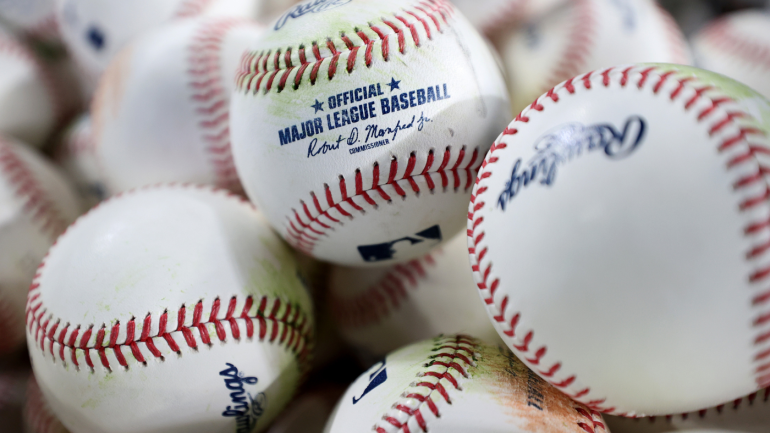
Monday marks the open of MLB's 2024 international signing period, one of two ways major-league teams acquire amateur talent each year. The draft you see every summer covers players born in the United States, Canada, and Puerto Rico. Players from everywhere else in the world fall into international free agency.
Roughly 30% of current MLB players were originally signed as international free agents, including reigning MVPs Ronald Acuña Jr. Jr. and Shohei Ohtani, and other stars like Sandy Alcantara, Julio Rodríguez, and Juan Soto. Perennial contenders like the Dodgers and Yankees, teams that usually pick late in the draft, use international free agency to add high-end prospects to their farm system.
Future All-Stars will be signed when international free agency opens Monday. Maybe even a future Cy Young winner or MVP. Heck, someone who signs Monday could one day find himself in Cooperstown. The Padres grabbed Pipeline's No. 1 prospect in shortstop Leo De Vries, while the Mets have signed Vladi Miguel Guerrero, the 16-year-old son of Hall of Fame Vladimir Guerrero. Here's everything you need to know going into the open of the 2024 international signing period.
Current format
International free agency remains free agency because MLB and the MLB Players Association did not agree to an international draft in 2022. MLB has pushed for an international draft for years, but the union has resisted because it would strip players of the freedom to pick their team, not to mention limit their earning potential. The league recently offered to eliminate the qualifying offer system in exchange for an international draft, but the MLBPA said no. The current international free agency system remains through at least 2026, when the current collective bargaining agreement expires.
The international signing period used to run from July 2 to June 25, but the start of the 2020-21 signing period was pushed back to Jan. 15 because of the pandemic, and that change is now permanent. The signing period is now neatly confined to a single calendar year, and runs from Jan. 15 to Dec. 15. To be eligible to sign, players must be at least 16 years old and turn 17 by Sept. 1 of the following year. This year's newly eligible players were born between Sept. 1, 2006, and Aug. 31, 2007.
Bonus pools
International bonus pools, the money teams can spend on players, are tied to revenue and market size. Generally speaking, small-market teams get the biggest bonus pools and large-market teams get the smallest. There are bonus pool penalties for signing major-league free agents who have a qualifying offer attached, and teams can trade for an additional 60% of their original bonus pool. The bonus pools are a hard cap. You cannot spend more than you're allotted.
Here are the bonus pools for the 2024 international signing period, via MLB.com:
- $7,114,800: Diamondbacks, Guardians, Orioles, Pirates, Rockies, Royals
- $6,520,000: Athletics, Brewers, Mariners, Marlins, Rays, Reds, Tigers, Twins
- $5,284,000: Astros, Braves, Dodgers, Giants, Mets, Nationals, Red Sox, White Sox
- $5,152,000: Angels, Blue Jays, Cardinals, Cubs
- $4,652,200: Padres, Phillies, Rangers, Yankees
The Angels (Tyler Anderson), Blue Jays (Chris Bassitt), Cardinals (Willson Contreras), and Cubs (Dansby Swanson) all forfeited $500,000 of international bonus pool money to sign a qualified free agent. The Padres (Xander Bogaerts), Phillies (Trea Turner), Rangers (Jacob deGrom), and Yankees (Carlos Rodón) each each forfeited $1 million to sign a qualified free agent because of their competitive balance tax status.
It should be noted that bonuses of $10,000 or less do not count against the bonus pool. Players who get bonuses that small usually aren't great prospects, though every so often one breaks through and reaches the big leagues. Houston signed both Cristian Javier and Framber Valdez to $10,000 bonuses as amateurs, for example.
International players under 25 can sign minor-league contracts only. Teams cannot entice players by offering to put them on the 40-man roster. Because he was posted at age 25, Yoshinobu Yamamoto was not subject to the international bonus pools and free to sign his record $325 million contract. If he's posted next offseason, Japanese phenom Roki Sasaki will be limited to a minor-league deal because he is only 22.
Top prospects
Unlike last year, when catcher and current Padres prospect Ethan Salas stood out from the rest of the player pool, there is no consensus No. 1 prospect this signing period. That doesn't mean there aren't very good prospects available. It just means there is no one single prospect everyone agrees is the head and shoulders above the rest. Here are the signing period's most notable players, listed alphabetically.
SS Fernando Cruz, Dominican Republic: Cruz stands out for his baseball IQ as well as his tools. MLB.com writes: "With an easy load and superb bat speed, his sound offensive approach portends to lend itself to 20-25 homer power as he matures." He's agreed to a deal with the Cubs for $4 million.
SS Leo De Vries, Dominican Republic: A switch-hitter with an advanced approach for a teenager, De Vries is said to model his game after José Ramírez, per MLB.com. He is expected to remain at shortstop long-term rather than outgrow the position. The Padres have agreed to a deal for $4.2 million.
RHP Branneli Franco, Dominican Republic: Arguably the best pitcher in this year's class, Franco sits low 90s with his heater and has a good changeup. MLB.com adds "he has already been heralded for his poise on the mound." He's reached a deal with the Cardinals for $800,000.
SS Jose Perdomo, Venezuela: Perdomo is a bat-first player who, according to Baseball America, has received comparisons to Gleyber Torres, another Venezuelan who played shortstop as an amateur. The Braves have agreed to sign him for $5 million.
OF Paulino Santana, Dominican Republic: Featuring arguably the most power in this year's class, Santana has been compared to Julio Rodríguez for his five-tool ability, says MLB.com. He and the Rangers have a deal for $1.3 million.


















